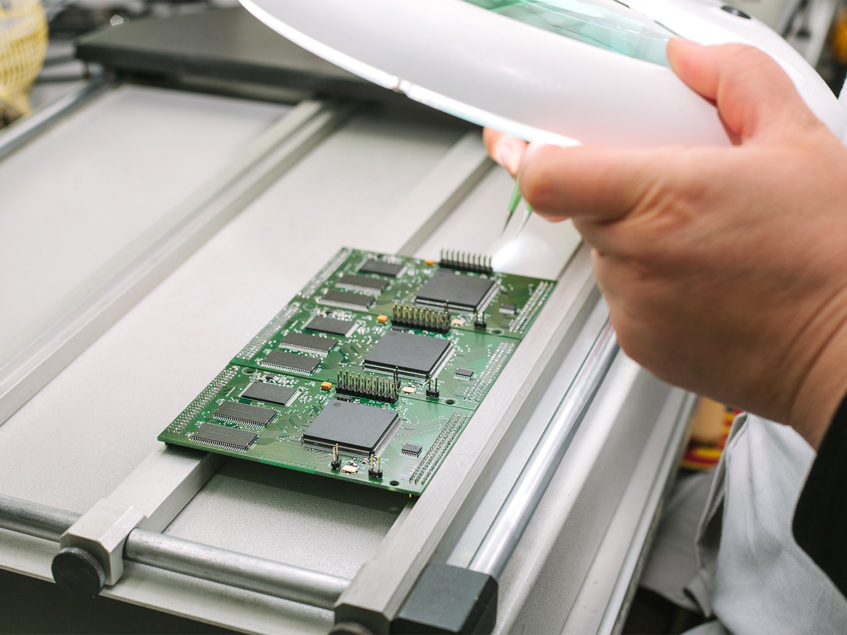
In early January, a New York public relations firm sent an email warning about what it characterized as a threat to the federal government’s program to revitalize the U.S. semiconductor industry.
The message, received by The New York Times, accused Intel, the Silicon Valley chip titan, of angling to win subsidies under the CHIPS and Science Act for new factories in Ohio and Arizona that would sit empty. Intel had said in a recent earnings call that it would build out its facilities with the expensive machinery needed to make semiconductors when demand for its chips increased.
The question, the email said, was whether officials would give funding to companies that outfitted their factories from the jump “or if they will give the majority of CHIPS funding to companies like Intel.”
The firm declined to name its client. But it has done work in the past for Advanced Micro Devices, Intel’s longtime rival, which has raised similar concerns about whether federal funding should go to companies that plan to build empty shells.
Rival semiconductor suppliers and their customers pulled together last year as they lobbied Congress to help shore up U.S. chip manufacturing and reduce vulnerabilities in the crucial supply chain. The push led lawmakers to approve the CHIPS Act, including $52 billion in subsidies to companies and research institutions as well as $24 billion or more in tax credits — one of the biggest infusions into a single industry in decades.
One challenge for the Commerce Department will be to distribute the money widely enough across the nation to create several thriving “ecosystems” that can bring together raw materials, research and manufacturing capacity, but not undermine the effort by spreading it too thinly. With dozens of companies, universities and other players interested in snagging a share, the funding could go fast.
AMD and Intel, both based in Santa Clara, California, have competed fiercely for the market for microprocessor chips. Most American chip companies, including AMD, focus on designing cutting-edge products while outsourcing the costly manufacturing to overseas foundries, most of which are in Asia.
In meetings with government officials and in a public filing, Intel has called into question how much taxpayer money should go to its competitors that have offshore headquarters, arguing that American innovations and other intellectual property could be funneled out of the country.
AMD expressed concerns about whether certain unnamed competitors had proved that they could operate effectively as a foundry and make leading-edge chips. Intel has struggled on both counts. And AMD highlighted the risk that grant recipients would not immediately spend that money to outfit their factories with equipment.
Patrick Gelsinger, Intel’s chief executive, had previously outlined the “smart capital” strategy which has stressed building factory shells and then investing to equip them in accordance with market demand.
- SEO Powered Content & PR Distribution. Get Amplified Today.
- Platoblockchain. Web3 Metaverse Intelligence. Knowledge Amplified. Access Here.
- Source: https://www.supplychainbrain.com/articles/36695-chip-makers-turn-cutthroat-in-fight-for-share-of-federal-money
- a
- About
- accused
- across
- Act
- advanced
- AMD
- American
- and
- approve
- arizona
- asia
- based
- Biggest
- Billion
- bring
- build
- Building
- california
- call
- called
- Capacity
- certain
- chain
- challenge
- characterized
- chief
- chip
- Chips
- CHIPS Act
- Clara
- client
- Commerce
- Companies
- competed
- competitors
- Concerns
- Congress
- could
- country
- create
- Credits
- crucial
- Customers
- cutting-edge
- decades
- Demand
- Department
- designing
- Devices
- distribute
- dozens
- Early
- Earnings
- earnings call
- effectively
- effort
- enough
- equipment
- executive
- expensive
- expressed
- facilities
- factories
- factory
- FAST
- Federal
- fight
- Filing
- Firm
- Focus
- Foundry
- from
- funding
- Give
- Go
- Government
- grant
- Headquarters
- help
- Highlighted
- How
- HTML
- HTTPS
- immediately
- in
- Including
- increased
- industry
- innovations
- institutions
- Intel
- intellectual
- intellectual property
- interested
- investing
- IT
- January
- jump
- Last
- Last Year
- lawmakers
- Led
- machinery
- Majority
- make
- Makers
- manufacturing
- Market
- materials
- meetings
- message
- money
- more
- most
- name
- nation
- needed
- New
- New York
- New York Times
- officials
- Ohio
- ONE
- operate
- Other
- outlined
- Outsourcing
- overseas
- past
- plan
- plato
- Plato Data Intelligence
- PlatoData
- players
- previously
- Products
- property
- proved
- public
- Public Relations
- Push
- question
- raised
- Raw
- received
- recent
- recipients
- reduce
- relations
- research
- Risk
- Rival
- Said
- Santa
- Science
- semiconductor
- Semiconductors
- several
- Share
- should
- Silicon
- Silicon Valley
- similar
- single
- spend
- Spreading
- Strategy
- suppliers
- supply
- supply chain
- tax
- Taxpayer
- The
- The New York Times
- their
- threat
- thriving
- times
- titan
- to
- together
- too
- TURN
- u.s.
- under
- Undermine
- Universities
- UNNAMED
- Valley
- Vulnerabilities
- warning
- What
- whether
- which
- while
- widely
- will
- win
- Work
- would
- would give
- year
- zephyrnet












